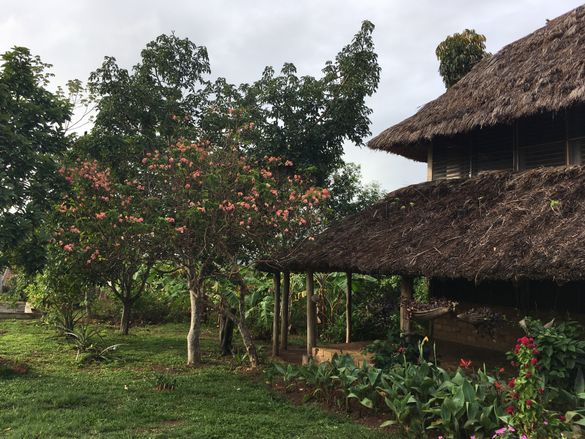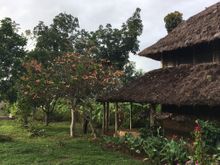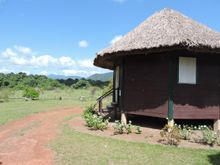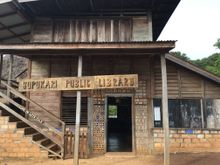 13 Mar 2019
13 Mar 2019

-working closely with sister agencies on facilitating more community tourism
The little-known South American nation of Guyana is making waves thanks to its commitment to an innovative sustainable tourism model. Recognised at ITB Berlin as the world's number one Eco-Tourism Destination at the Sustainable Destination Top 100 Awards, Guyana is setting a benchmark in community led and owned tourism.
Within Guyana's tourism model, community-led and owned initiatives form one of the key pillars supporting the sustainability drive. To scale up the number of community tourism enterprises nationwide, the Guyana Tourism Authority and Ministry of Indigenous Peoples' Affairs are aligning efforts and resources in order to meet growing market demand.
Community tourism projects in Guyana are different from most destinations. The majority are owned and managed by local indigenous communities and designed to deliver wide-reaching benefits such as preserving local customs and traditions, generating income for the community as a whole, and offering training and professional development.
Identified as a growing tourism sector in Guyana, a number of communities, especially in the hinterland, are now offering unique community-led and owned experiences to travellers. These communities have a low carbon lifestyle and are committed to protecting and preserving local customs and the pristine natural environment they call home.
Nine indigenous peoples call Guyana home. They are proud to share their traditions and knowledge with guests of community-led and owned eco-lodges. Because Guyana is the only country in South America where English is the official language, visitors are able to communicate directly with their indigenous hosts, with no need for a translator.
Examples of some of Guyana's leading community tourism projects include:
Surama is a village in the North Rupununi area that demonstrates an impressive example of a thriving community-led and owned tourism model invested in the preservation of bio-diversity. The local Makushi community has masterfully curated activities for guests that include multi-day hikes and camping expeditions, river canoe trips, wildlife-watching, visits to community school centres and traditional celebrations. The Surama Eco-lodge provides comfortable accommodation constructed using local craftsmanship and traditions of the Makushi people. Roughly 60% of the community's income is sustainably generated through tourism-related activities. www.suramaecolodge.com
Rewa Eco-lodge is a community tourism project that offers an excellent base for exploring the nearby rivers and rainforest. Located on the converging point of the Rupununi and Rewa rivers, limited tourism volume means interactions with local villagers is a genuine, unrehearsed and heart-warming experience. The accommodation itself is rustic and close to nature; guests are in the heart of the rainforest and so numerous day hikes, fishing expeditions for the giant arapaima and other species, canoe trips, birdwatching treks and wildlife observations are offered by the Makushi locals. This area of Guyana was the filming location for much of the BBC's Lost Land of the Jaguar docuseries. www.rewaecolodge.com
Caiman House can be found in the heart of Yupukari Village. It combines a guest lodge and education centre focused on research and conservation projects along the nearby Rupununi River. It is an ideal location for guests to participate in the research of the history and ecology of the black caiman and yellow-footed tortoise species, proving to be an excellent model and vehicle for indigenous capacity building, training and education. Experiences available to visitors include caiman tagging (involving weighing, measuring, tagging and releasing), wildlife spotting, and Village hikes and tours. The accommodation itself is simple, but spacious and comfortably located in the heart of the village. www.rupununilearners.org
Konashen is Guyana's southernmost indigenous village and is the first community owned conservation area within Guyana's system of protected areas. The native Wai Wai people have maintained their way of life for millennia. Sustainable management of local resources is their primary focus in an area that offers prime wildlife spotting including that of several endangered species. The community's guided treks, some including overnight camping, offer total natural immersion in the dynamic rainforest terrain. Visitation is limited to a small number of travellers, guaranteeing an authentic and immersive experience. https://www.guyanatourism.com/local-tour-operators/
Aranaputa on the Georgetown – Lethem road, is known for its production of arguably the best peanut butter in Guyana, and one of the many and more successful community initiatives in the North Rupununi. Local guides take guests on expert tours of nature trails and hiking routes familiar to the Makushi for generations. Accommodation is available in the form of nearby lodges like Rockview or Surama Lodge where guests can stay in a thatched roof benab styled accommodation. Following a day of adventure out in the area, the Makushi like to engage visitors in their traditions, culture and cuisine. https://www.guyanatourism.com/local-tour-operators/
Santa Mission set in the sandy savannahs of the Kamuni Creek not far from Georgetown, is perfect for experiencing a slice of Arawak life. The mission is a wonderful place to see weavers and other artisans at work with many of the handicrafts available to purchase. The locals take guests on visits to the nearby Arrowpoint Nature Resort as well as offering the chance to participate in cassava bread making while on a tour of the village. www.wilderness-explorers.com/guyana/lodges/arrowpoint/ and www.guyanatourism.com/arrowpoint-tour/
Moraikobai is one of the more popular indigenous villages found on the coastland of Guyana. Approximately a three-hour journey via land and river from the capital city of Georgetown, the journey is scenic and relaxing. Your tour guides aim to please and offer a variety of options from village tours and highly entertaining cultural presentations to fishing, wildlife spotting, and birding along Moraikobai Franswa Creek. But the best part about this village in interacting with the local indigenous peoples and learning their way of life. Rainforest Tours arranges day tours and overnight visits: http://www.rftoursgy.com/
In a world where the impacts of travel and tourism on their destinations are increasingly in the collective conscience of travellers, Guyana continues to position itself as a world leader in sustainable community-led and owned tourism.




